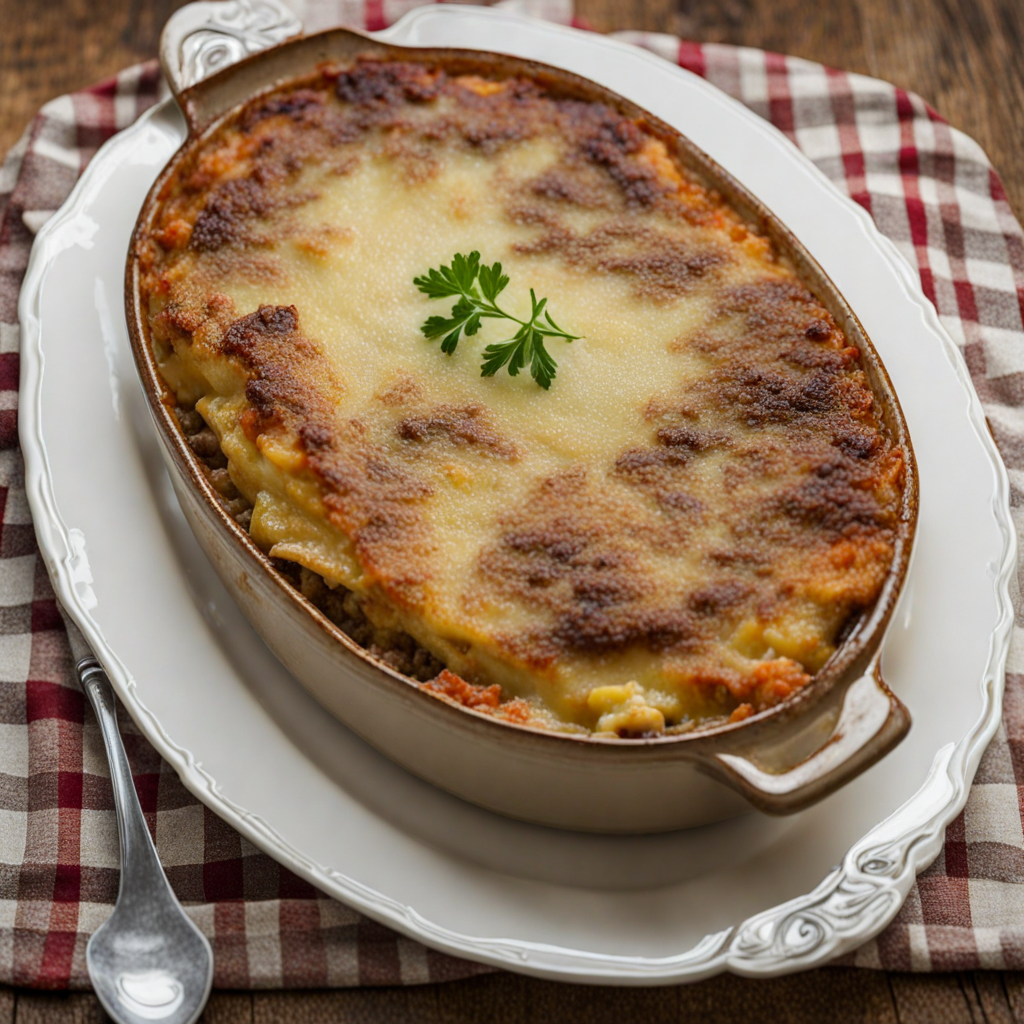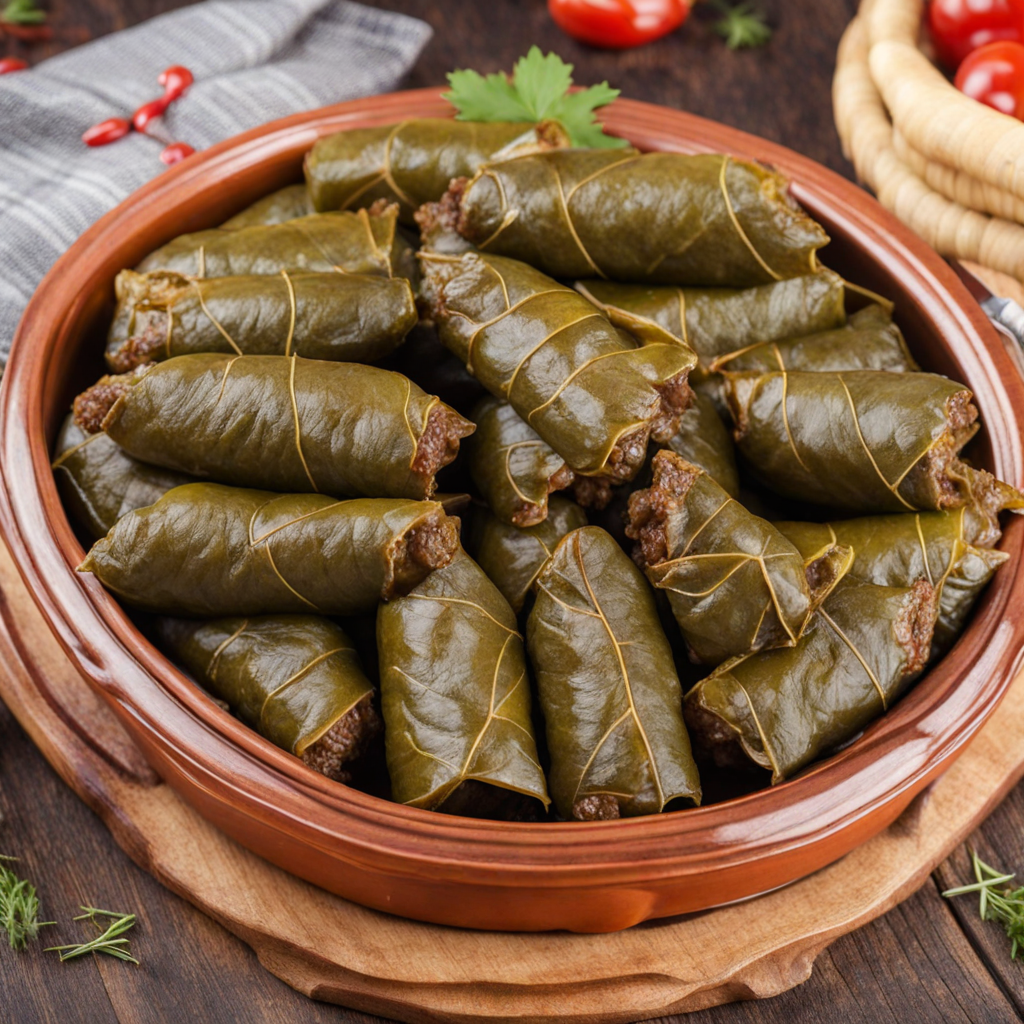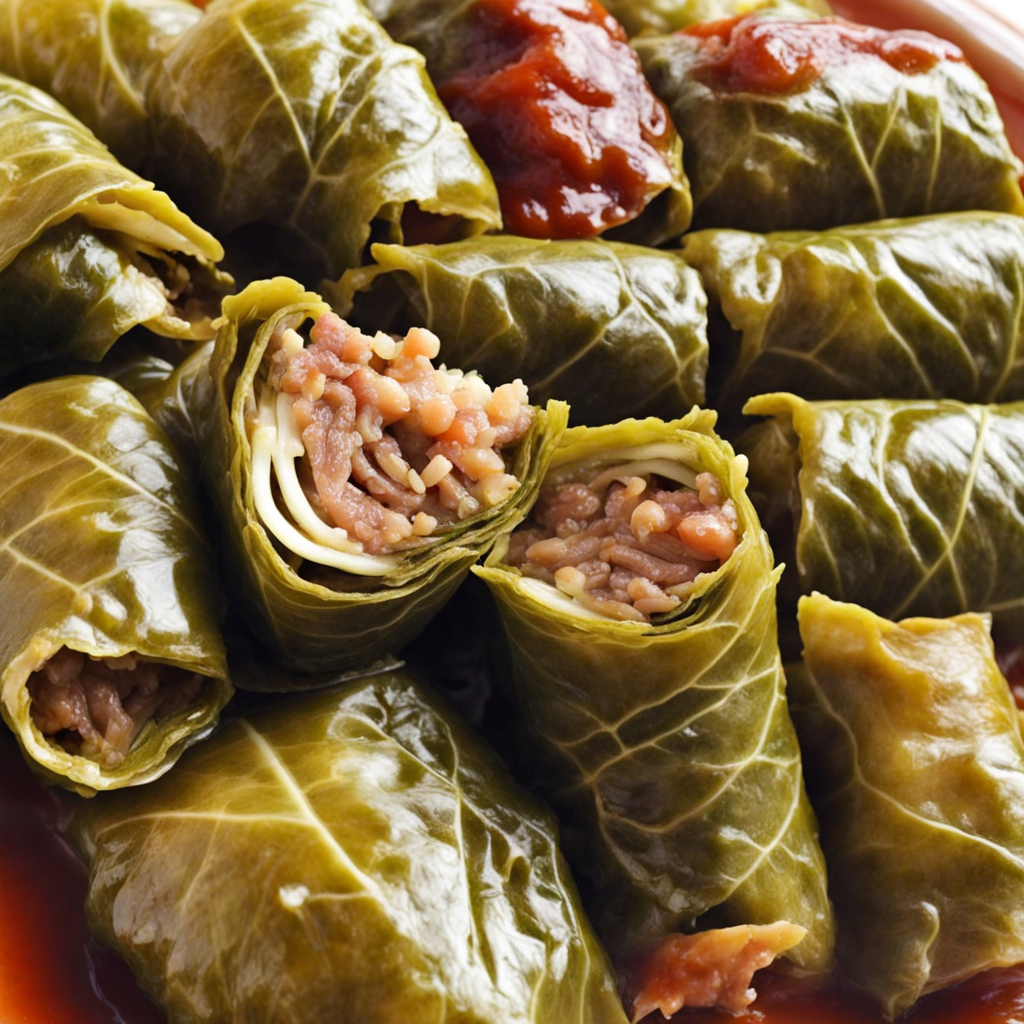Moussaka
Мусака, or moussaka, is a beloved traditional dish in North Macedonia, showcasing the rich culinary heritage of the Balkan region. While variations of moussaka can be found throughout the Mediterranean and the Middle East, the North Macedonian version holds its own unique characteristics, reflecting the local ingredients and flavors. This dish has a storied history, believed to have been influenced by the Ottoman Empire, where it evolved over centuries into the comforting casserole that is enjoyed today. The flavor profile of North Macedonian moussaka is a harmonious blend of earthy, savory, and slightly sweet notes. The combination of spiced meat and vegetables melds beautifully under a creamy béchamel sauce, creating a dish that is both hearty and satisfying. The rich flavors come from the careful layering of ingredients, where each component contributes to a depth of taste. The spices used, including paprika, black pepper, and sometimes a hint of cinnamon, elevate the dish, adding warmth and complexity. Preparation of moussaka involves several steps, each essential for achieving the perfect balance of flavors and textures. The key ingredients typically include minced meat, often beef or lamb, layered with sliced eggplant, potatoes, and sometimes zucchini. The eggplant is usually salted and left to drain to remove excess moisture and bitterness before cooking. The minced meat is sautéed with onions and spices until it is fragrant and well-cooked. Once the meat mixture is ready, the next step involves layering the ingredients in a baking dish. The
How It Became This Dish
A Culinary Journey Through Time: The History of Мусака in North Macedonia #### The Origins of Мусака The dish known as Мусака (Moussaka) has a rich and complex history, woven into the culinary tapestry of the Balkans and the Mediterranean. Its roots can be traced back to ancient times, with variations appearing in different cultures, particularly in the Ottoman Empire, which played a crucial role in shaping the food traditions of the region. The name "moussaka" is believed to originate from the Arabic word "musaqqa’a," which means "cold," referring to the dish's preparation and serving method. The classical version of Moussaka, characterized by layers of eggplant, minced meat, and béchamel sauce, is most commonly associated with Greek cuisine. However, the North Macedonian iteration of the dish has its own unique characteristics, influenced by local ingredients and traditional cooking methods. In North Macedonia, Moussaka is often prepared with potatoes or zucchini, making it distinct from the Greek version which typically uses eggplant. This adaptation reflects the agricultural practices of the region and the availability of ingredients. #### Cultural Significance Moussaka holds a special place in North Macedonian culinary culture, often appearing at family gatherings, celebrations, and festive occasions. It is more than just a dish; it represents hospitality, warmth, and the importance of family traditions. The preparation of Moussaka is often a communal activity, with family members gathering to help peel vegetables, prepare the meat, and layer the ingredients. This collaborative effort reinforces social bonds and cultural identity. The dish is not only significant in a domestic context but also plays a role in North Macedonia's national identity. As a nation that has experienced a tumultuous history marked by various cultural influences, Moussaka serves as a culinary symbol that reflects the blending of traditions. It is a dish that transcends socio-economic boundaries, enjoyed by people from all walks of life, making it a staple in North Macedonian households. #### The Evolution of Moussaka As North Macedonia navigated through various historical phases, so too did its culinary practices. The Ottoman Empire's influence during the 15th to 19th centuries introduced new spices, cooking techniques, and ingredients that shaped local dishes, including Moussaka. The use of spices such as cumin, paprika, and black pepper became commonplace, enriching the flavor profile of the dish. In the early 20th century, as North Macedonia grappled with national identity amidst political upheaval and the aftermath of World War I, traditional recipes like Moussaka began to evolve further. The rise of nationalism in the Balkans saw a revival of interest in local cuisine, as people sought to reclaim their culinary heritage. Moussaka was embraced as a symbol of national pride, with families passing down recipes through generations, adapting them to reflect regional tastes and preferences. The post-World War II era marked a period of modernization and industrialization in North Macedonia. With urbanization, traditional cooking methods faced challenges as convenience foods became more prevalent. However, Moussaka remained a beloved dish, often prepared during special occasions or family gatherings. It served as a comforting reminder of home, embodying the flavors and aromas of North Macedonian kitchens. #### Contemporary Variations In contemporary North Macedonia, Moussaka continues to evolve, reflecting the influences of globalization and changing dietary preferences. While traditional recipes remain popular, modern chefs are experimenting with new ingredients and techniques. Vegetarian and vegan versions of Moussaka have emerged, utilizing ingredients like lentils, mushrooms, or even tofu, to cater to a growing demand for plant-based options. This culinary adaptation speaks to the broader trends in North Macedonian society, where an increasing emphasis on health and sustainability is shaping food choices. Farmers' markets and organic produce have gained popularity, encouraging a return to seasonal, locally sourced ingredients. Consequently, Moussaka is being reimagined with fresh vegetables and herbs, celebrating the rich agricultural heritage of the region. #### Moussaka in Gastronomy The status of Moussaka in North Macedonia has transcended mere home cooking, finding its way onto the menus of restaurants and cafes across the country. Chefs take pride in offering their unique interpretations, often combining traditional recipes with modern culinary techniques. This gastronomic evolution showcases the creativity and innovation of North Macedonian chefs, while still honoring the dish's historical roots. Moreover, Moussaka has gained international recognition, thanks to the growing interest in Balkan cuisine. Food festivals and culinary events highlight Moussaka as a key dish, drawing attention to North Macedonia's rich culinary heritage. As travelers seek authentic experiences, Moussaka serves as a gateway to understanding the culture, history, and hospitality of the region. #### Conclusion In conclusion, the history of Мусака in North Macedonia is a testament to the enduring nature of culinary traditions and their ability to adapt over time. From its ancient origins to its contemporary interpretations, Moussaka embodies the rich cultural heritage of the region, serving as a bridge between past and present. It is a dish that not only nourishes the body but also nurtures the spirit of community and belonging. As North Macedonia continues to navigate the complexities of modernity while preserving its rich traditions, Moussaka remains a beloved symbol of national identity. With each layered bite, one can taste the history, culture, and warmth of North Macedonian hospitality—a delicious reminder of the importance of food in connecting people and celebrating shared heritage. Whether enjoyed at a family gathering or in a bustling restaurant, Moussaka will undoubtedly continue to hold a cherished place in the hearts and homes of the people of North Macedonia for generations to come.
You may like
Discover local flavors from North Macedonia







